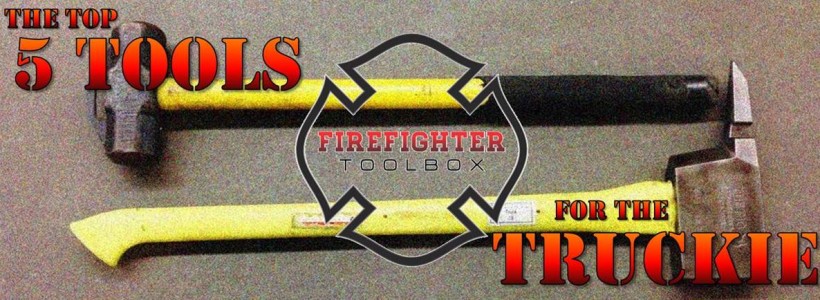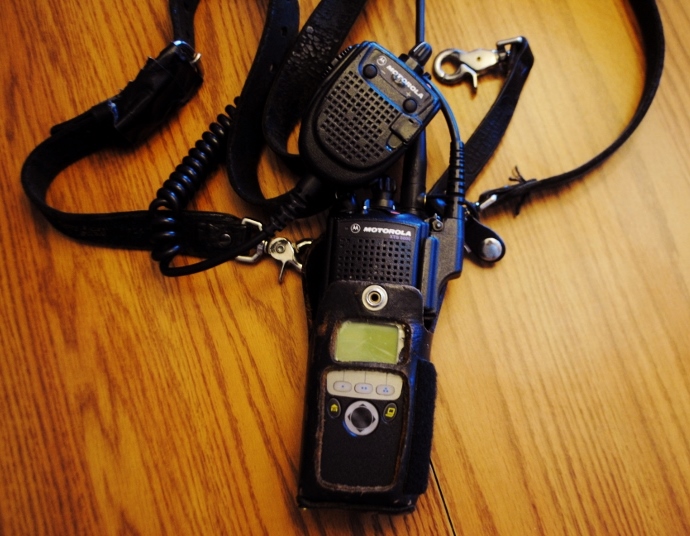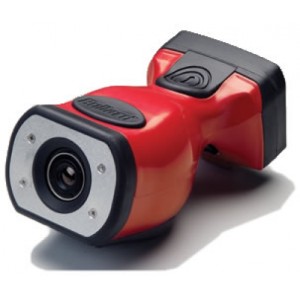The Top 5 Tools For The Truckie – Part 1
Disclaimer
There are many tools that a truckie needs when fighting fires. Most fundamental, of course, is the human brain, followed closely by the training and experience a firefighter develops from his or her years of service. Personal Protection Equipment (PPE) and Self-Contained Breathing Apparatus (SCBA) are also vital assets for the firefighter. However, moving beyond these essentials, this series will review, in no particular order, the physical tools and equipment we use to support our efforts and give us an edge on the modern fireground.
Truckie Tool #5 – The Portable Radio
If you don’t believe the portable radio is important, just ask someone who has needed to call in a mayday!
Communication is critical and the portable radio provides valuable information and feedback during a fire. Individuals can provide updates on progress or challenges at a fire location, allowing them to coordinate efforts and more effectively support one another. Additionally, radios allow Command to relay situational developments and advise the team more efficiently. Think of how much time and leg work radios save each truckie, especially when every second counts.
Despite the significant benefits, there are two potential challenges that can undermine a portable radio’s effectiveness: competition for air time and a weak lapel cord.
2 Weaknesses Of the Portable Radio and How To Overcome Them
Weakness #1 – Competition For Air Time
Radios cannot effectively relay information if everyone is fighting for air time. Competing transmissions can lead to confusion as truckies are continuously cut off or overridden by their comrades. Compounding this problem is information overload; neither individual truckies nor Command can discern the most important information from all the chatter they are receiving.
What’s the solution? All members of the team must exercise radio discipline. They must avoid unnecessary radio transmissions and keep the transmissions they do send short and to the point. All members on the fireground need to know what information is necessary and the most efficient way to relay it. That will keep down the radio traffic.
Weakness #2 – The Lapel Cord
Physically speaking, a portable radio is most vulnerable at the lapel mic cord, which runs from the radio body to the lapel mic. A firefighter from my station attempted to call in a mayday while caught in a hot environment. He had wrapped the mic cord around his shoulder to the lapel strap, leaving the mic cord outside his coat. The heat melted the cord and he was unable to call the mayday.
To avoid this, radios should be worn under the coat. The radio harness should be adjusted to let the radio hang beneath the turnout coat’s bottom, but the cord should be slid up the front underside of the coat and out the front flap next to the lapel strap. This allows access to the radio for volume and channel changes, ensures the mic is hooked on the front of the coat and protects the mic cord.
(See Podcast #034- How To Wear Your Portable Radio)
Truckie Tool #4 – The Thermal Imaging Camera
The thermal imaging camera (TIC) is essential for the information it provides the truckie. A TIC allows a truckie to estimate a fire’s location and intensity without entering the structure.
Hot basement windows likely indicate a basement fire. Hot windows on the second floor mean a possible bedroom fire on Division 2. Hot spots on the roof suggest the fire has found the attic space. This is vital information for planning and coordination before a firefighting team takes action.
Once inside the structure, a TIC can help a firefighter identify the interior layout, including furniture, doors, and stairways. This enables the truckie to navigate the structure and work around obstacles when conducting interior search operations.
We can use a TIC to determine which direction the heat is coming from, indicating the direction of the fire. The TIC gives us a way to monitor for changing heat conditions while conducting search operations. And, with a TIC, we can visually keep track of our partners or our crew while they are operating in the interior of a structure.
2 Keys To Effectively Using The Thermal Image Camera
Key #1 – Know the TIC & How to Use it
The thermal imaging camera is one of the most underused tools in the fire service today. It does not belong sitting on the rig during a fire. It does not belong in the hands of the OIC who is standing out in the yard establishing command. A TIC belongs on the inside with the crews performing interior operations.
For the truckie making a push without a hose line, the TIC is invaluable. But a truckie must be proficient with the TIC to use it to its fullest potential. The only way a firefighter will become proficient with it is to use it every chance he or she gets, becoming familiar with the TIC and how it operates. Don’t wait until the call arrives and you really need the TIC; become familiar enough with it now to use it effectively when the time comes.
Key #2 – Always Remember the Basics
All technologies fail at some point, even if that failure is from something as simple as a dead battery. The TIC is no exception. When that failure occurs, a truckie has to go back to the basics. Practicing basic left-wall or right-wall searches, while using the TIC, is still valuable. We preach sticking to the basics when using a TIC for a reason: Those fundamentals of searching are the best fallback if the TIC fails and could possibly save your life.
Read the complete series here!
Part 1: The Portable Radio and the Thermal Imaging Camera
Part 2: The Halligan Bar, the Pig and the Maul
Part 3: Rescue Ropes







